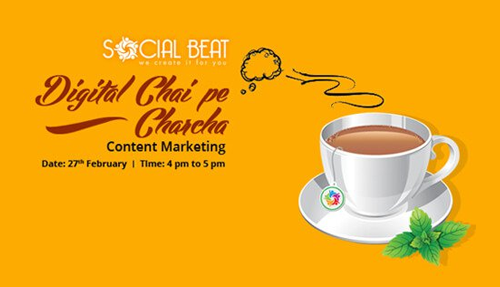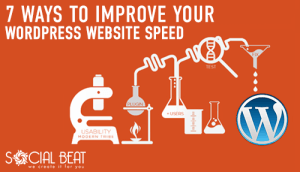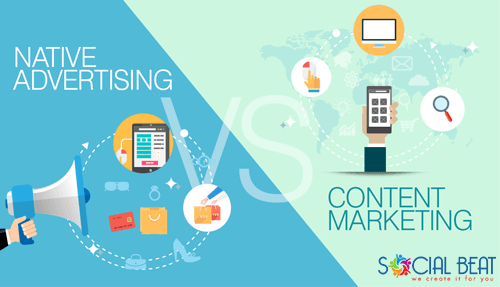The second edition of the Digital Chai Pe Charcha, held at our office on 27th Feb 2016 received a great response with about 25 participants including entrepreneurs, professionals, digital marketers and social media influencers taking active part in the discussion. The topic of discussion was achieving content marketing success in 2016 and beyond.

As a recap for those who attended the session and for the benefit of those who didn’t, here’s a summary of the key takeaways from the session:
Why Content Marketing is essential:
Content marketing is a key part of any marketing strategy and is known to produce business results, as shown by the Hubspot survey below:

Also, as compared to paid media, it has a more sustained long-term impact:
 Source: Neil Patel
Source: Neil Patel
Also, with most users being bombarded with ads from a large number of brands and with the use of ad blocking growing at a rapid pace, inbound marketing through valuable content works better and helps reach out to an audience that paid ads would never reach.

“10x Content” is required to make your content stand out:
With over 27 million pieces of content being produced every day, creating content that is good and unique alone doesn’t work. You need to create content which as defined by Rand Fishkin is “Content that is 10 times better than the best result that can currently be found in the search results for a given keyword phrase or topic.”
Creating 10X Content:
Read your audience’s minds:
The key is to find questions that your target audience is looking for answers to and problems they are looking to solve. Tools and platforms that could help you with this research are:
- Quora
- Yahoo Answers
- FB Groups
- Comments on popular blog posts
- Industry forums and discussion boards
Combine User-focused content with search engine focused content:
Once you find topics that you could create 10x content on you would also need to check if there is a large enough number of users who are searching for content around those topics. This is where Google Keyword Planner comes into play and helps you figure out which topics you should create content on to get large volumes of organic traffic.
Find the most successful content around the topic:
Once you decide on a topic to create content on, you need to research the topic, do a competitive analysis and find the most successful content around it. This can be done by searching for different keyword variations on Google Search to identify top ranked content or by using a tool like Buzzsumo to find the most shared content on the topic.
Make your content better than any other top content out there:
Ensure your content:
- Is longer, detailed, more thorough
- Is more up-to-date
- Contains better visuals – infographics, images, slideshares, videos
- Has an enhanced User Experience
For more detailed steps on creating 10x content check out our blog on 10 ways to create 10x content. Some examples of what 10x content could possibly look like are listed below:
- 10 Best E-commerce platforms for your online store
- The Complete Glossary of Real Estate Terms
- Credit Card – A Friend or a Foe
Content Amplification is Key:
Simply ideating, creating and publishing content does not work anymore and content distribution requires as much, if not more, effort as content creation. Some avenues for content amplification that you could use would be:
- Promote on Social Networks
- Use LinkedIn Ads, Facebook Ads & Promoted Tweets.
- Notify your email list
- Respond to questions on Quora, Reddit, comment on blogs, take part in industry forums
- Leverage the reach of influencers
- Get featured in industry roundups
You could also check out or blogs on 21 SEO Link Building Techniques for 2016 and the 15 Best Social Bookmarking Websites to promote your content. For other useful content amplification strategies, you can also take a look at our slideshare below:
Q & A from the session:
Some of the questions that came up during the discussion with the answers are listed below as well:
Q: Is content marketing the way forward for SEO as well?
A: The focus of SEO has shifted from just keyword optimization and link building to not only producing quality content that addresses users’ needs but also delivering that content to the user with the best experience possible. Content is now the new SEO and creating 10X content is going to be the way forward in 2016.
Q: How do you measure results from Content Marketing?
A: Three metrics would help measure the impact of your content marketing efforts:
- The social impact – Shares on social media platforms
- Organic and Referral Traffic – Number of visitors to the blog from Google Search, Social Media and other referral sites
- Conversions from the blog – Enquiries generated from your content marketing efforts.
Q: How long do content marketing efforts take to start showing tangible business results?
A: There is only one right answer here and that is – it depends. There are multiple factors that will impact your success timelines like your existing domain authority, the time and effort invested in content creation and promotion and the content promotion budgets, if any. Typically content gets indexed in a few days and you can start getting traffic but time period to get business results can vary from 3-4 months all the way up to even a year. For example, when we started our influencer marketing platform, Influencer.in it took us 4 months before we started getting tangible results in the form of enquiries via our content or via google organic traffic.
Q: What tools can be used to create Infographics when one does not have a design team?
A: Piktochart, Infogram and Canva are good tools to help you craft beautiful infographics
Q: Does post regional language content help content marketing efforts?
A: Yes, translating content to regional languages can help reach out to a newer audience, provided that audience is relevant to your business. Regional language content can also help increasing search traffic to your website, as shown in this article on the growth of regional content as well as this case study by Neil Patel.
Q: How do I know my content is 10x?
A: Whether your content is 10x or not is a little subjective – what may appear 10x to you may not look like 10x to someone else. Nevertheless, below are some validation questions to help you figure out if your content is 10x:
- Is your content longer, detailed, more thorough and more up-to-date than any other content on the web?
- Does the content contain better visuals – infographics, images, slideshares, videos?
- Does your blog have an excellent User Experience?
- If you were your target audience, would you find this content valuable enough to link to it or share it?
Here’s what some of our participants had to say about the session:

Creating content must me with two foci – one us user focus and the other is search engine focus – @r_uttamchandani at #DigitalCPC
Very informative meet @r_uttamchandani .Thank You @socialbeatindia abt #contentmarketing#digitalcpc
targeting the right audience with your content,products & your services #10xcontent#DigitalCPC@socialbeatindiapic.twitter.com/nIX1mo1Yh1
User-focused #ContentMarketing that worked for @PetwishIndia #DigitalCPC @socialbeatindia pic.twitter.com/MP0hXAXEP9
— Krithika Ramani (@krithikaramani3) February 27, 2016
#DigitalCPC Rehashing #content might help to a certain extent but cannot beat original unique content. #contentmarketing
Audience hooked on to interesting insights on #ContentMarketing from @r_uttamchandani#DigitalCPC@socialbeatindiapic.twitter.com/DEyaAQaMbd
Those of you who missed the inaugural edition of the Digital Chai Pe Charcha last month can check out the meeting summary here. You can follow us on Facebook and Twitter or check out the hashtag #DigitalCPC for more details on the next Digital Chai pe Charcha meet.
Are there any digital marketing challenges or problems you face in your organization? Do let us know and we would be happy to include them as discussion topics in upcoming Digital Chai Pe Charcha sessions.














